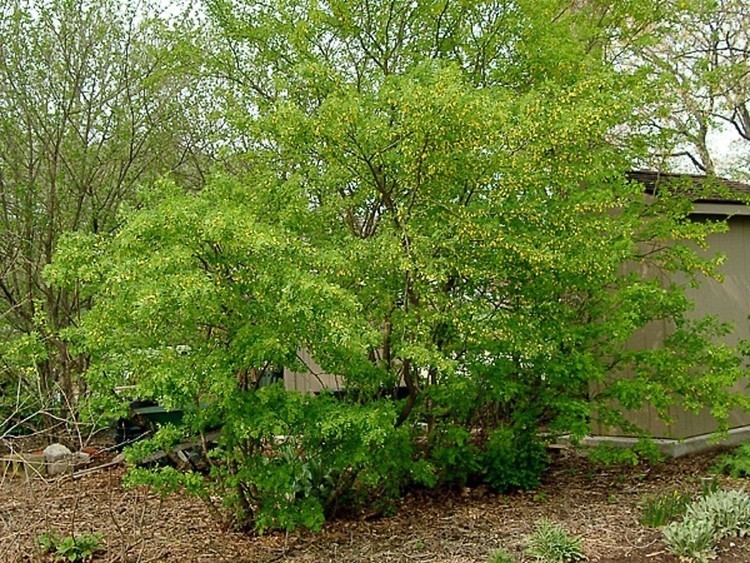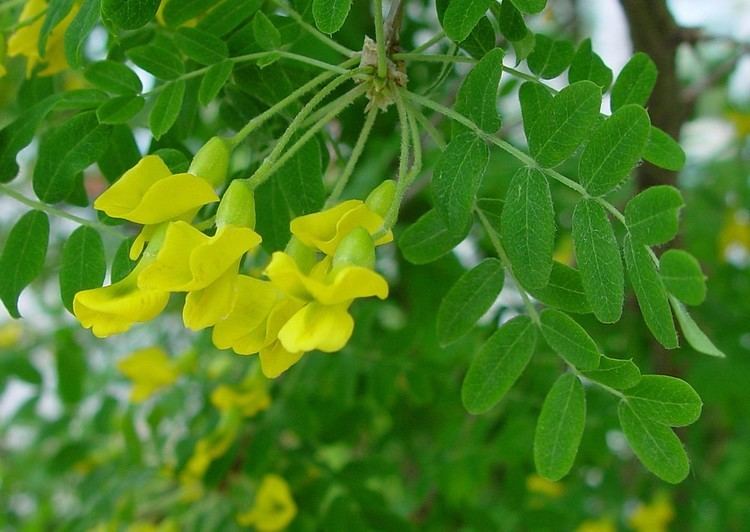Higher classification Caragana | Genus Caragana Scientific name Caragana arborescens Rank Species | |
 | ||
Similar Shadbush, Honey locust, Silverberry, Bitter‑berry, Oregon Grape | ||
Siberian pea tree pea shrub caragana arborescens seeds on www myseeds co
Caragana arborescens, the Siberian peashrub, Siberian pea-tree, or caragana, is a species of legume native to Siberia and parts of China (Heilongjiang Xinjiang) and neighboring Mongolia and Kazakhstan. It was taken to the United States by Eurasian immigrants, who used it as a food source while travelling west. In some areas of the United States it is considered an invasive species.
Contents
- Siberian pea tree pea shrub caragana arborescens seeds on www myseeds co
- Description
- Cultivation
- Uses
- References

Description

It is a perennial shrub or small tree up to 2–6 m (6 ft 7 in–19 ft 8 in) tall. Typically, it has a moderate to fast growth rate, being able to grow one to three feet during the first year after trimming.

The leaves vary from light green to dark green, and are alternate and compound with many small leaflets. Fragrant yellow flowers bloom in May or June. The fruits are legumes which contain many seeds, and ripen in July.
Cultivation

Caragana arborescens is hardy to USDA zone 2. It tolerates a variety of soils, but prefers good drainage. It is drought tolerant, and may drop its leaves in severe drought.

It can be trimmed back to the root, with 6 to 12 inches remaining aboveground, when it is desired to appear more like a bush than a tree. It will adapt well to this trimming if adequate water and nitrogen-rich fertilizer is supplied, and will regrow about 4 feet per year until reaching the desired height.
Caragana arborescens has no known serious disease problems. Grasshoppers can defoliate it, but it recovers well from the attacks. There are no known burrowing animals that feed on the root system.
Uses
Caragana arborescens can be grown as an ornamental plant and bonsai. It has an extensive root system, and can be used in erosion control. The fragrant flowers attract bees.
The seeds are edible, but should be cooked before being eaten. There have been no verified cases of poisoning from consuming the seeds. The flowers are also edible, and can be used in salads.
It is recommended for planting in the outer rows of multi-row plantings. It can be used to neutralize soil to prepare for further planting. A legume, C. arborescens fixes nitrogen. It is suitable for planting in single-row field windbreaks where a dense, short barrier is desired.
C. arborescens is used for nesting by several songbirds. The seeds are occasionally eaten by a few songbirds. The plant is not a preferred food for browsing animals, but its fragrant flowers attract many pollen-consuming animals.
